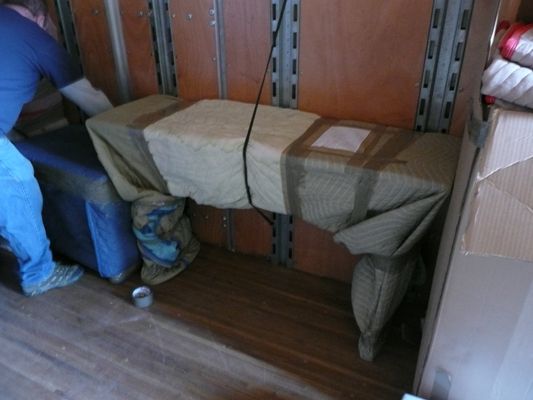
"Delivery guy" John Broomall shares tips on how to build durable furniture that can handle a trip to a client's house or even just withstand the journey from your shop to, say, an upstairs bedroom. For more on shipping furniture, read about the Fine Woodworking art director's experience shipping furniture across the country.
Whether it goes across town or just upstairs, your furniture has to leave the shop. Who knows how many times your piece will be moved over its life — with every move having the potential to age your piece by years in a few minutes. Sometimes the problems are caused by handling, but more often than you think problems stem from planning, design, construction, or work habits.
I deliver furniture for a retail shop in southeast Pennsylvania. I try to be extra careful because I know these pieces are made by individuals trying to make a living. I generally work alone handling one or two items at a time, but things happen. Most of the time, I can fix what goes wrong on my truck, but it is much harder to repair what went wrong in the shop.
A lot of things change when you start moving your furniture; crown molding can become a handhold, and the edge of an aluminum storm door can cut as quickly as any chisel.
In the coming weeks/months, I’ll post tips about what you need to do if you want your furniture to arrive undamaged or how to make it last for future generations to enjoy.
I’ll share simple steps that you can take during construction and finishing to make your piece more durable. I’ll also explain what you need to deliver a piece yourself and discuss simple additions to help keep kids safe.
| More from this series • Planning: It sounds silly, but will the piece fit in the client’s home? • Four perennial problem pieces • Some problem areas • Finishing problems: Leading cause of callbacks • How to avoid callbacks • Coming soon: Falling furniture: 14,700 children injured yearly |
Any comments? Anyone out there have any shipping disaster stories?




















Comments
It seems to me that the title of this topic implies that there is a lot of furniture out there that is poorly constructed. If a piece is constructed in the right way, with well fitted, quality joinery, and properly finished, what else can one do? One of a kind, or limited production custom furniture should be built without compromise. It is not reasonable to alter the design simply to make it sturdier or stronger. If the work is delicate, then it simply needs to be prepared for shipping properly, and this means building a custom crate or box.
This all seems so straightforward to me, but maybe I'm missing something.
Matt
Building a custom crate will certainly work, but ...
How many clients are willing to literally pay the freight for crating?
After it's delivered, your client may move. Who knows what they'll do? The only thing that's certain is that if their one-off piece is damaged, you'll be hearing about it.
I agree with Matt, design shouldn't be compromised, but one can still use the largest possible tenons for a design.
Log in or create an account to post a comment.
Sign up Log in